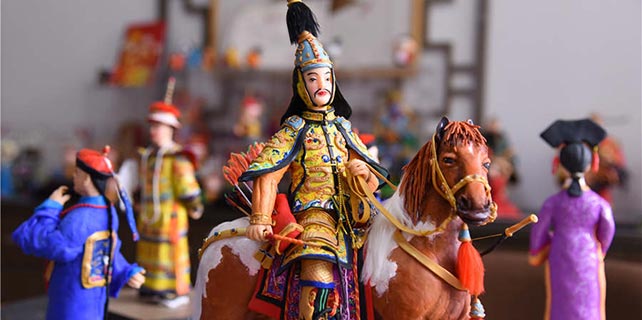Technology and tradition are made to measure
Tradition and technology are now intertwined when it comes to China's retail clothing sector.
Integration with e-commerce players has gathered pace as brick-and-mortar stores feel the pinch through online shopping habits, according to industry insiders.
Last year, 37 percent of Chinese customers purchased clothes online. This was much higher than the 20 percent recorded in 2012, a report released by KPMG in November showed.
It also found that online clothing transactions accounted for 21 percent of the retail sales in 2016, followed by home furnishings and home appliances.
"The traditional clothing industry now faces several bottlenecks for growth," the report stated.
"This includes the loss of customers, high costs of operation and low profits, the imbalance of inventory, and the weak product differentiation," the report added.
KPMG pointed out that in this new retail era, consumers will shape businesses and technologies of brands.
As the supply chain becomes more digitalized, integration with online shopping platforms will help traditional retailers connect with customers.
Brands, for example, will be able to predict purchasing preferences through online data. They will then target key sectors of the market with the right products.
Already the government has announced policies urging traditional retailers to strengthen links with e-commerce sites, logistics companies, and finance and telecommunications operators.
This comes at a time when online shopping sites are expanding rapidly into China's retail sector.
In a statement last year, the State Council recommended that e-commerce operators and bricks-and-mortar stores should look at ways of integrating.
Naturally, this could be achieved by combining market resources through cross shareholding, mergers and acquisitions, and other forms of strategic cooperation, the State Council stated.
Revamping their supply chain and compressing their product cycle from one year to one month would help traditional retailers, the KPMG report highlighted.
Brands could then judge through initial sales figures what consumers were buying and what new products were popular.
In this way, apparel stores will be able to combat the threat of excessive inventory, the report said.
The Inner Mongolia Erdos Group Co Ltd appears to illustrate what can be achieved when old-fashioned retailers link up with online partners.
The company produces about one-third of the world's cashmere and reported that sales revenues declined 15 percent between 2012 and 2015.
But since then, Erdos has attracted a new breed of young customers after increasing its online presence through internet shopping platforms.
Last year, the cashmere products category under the brand achieved sales revenue of 2.39 billion yuan ($360 million), a rise of 10 percent compared to 2015.
During the same period, its online sales surged 47 percent, accounting for 10 percent of the total, the company reported.
"Brick-and-mortar stores have been discovering the methods of online-to-offline integration, and they are trying to make new breakthroughs and substantial progress in the data orientation of goods, stores, and customers," said Zhao Ping, deputy director of the Chinese Academy of International Trade and Economic Cooperation under the Ministry of Commerce.
"Online shopping has been growing rapidly, but the growth rate has slowed down year by year," she said.
"This has signaled this sector has entered a mature growth period, which creates more space for traditional retailers," she added.









